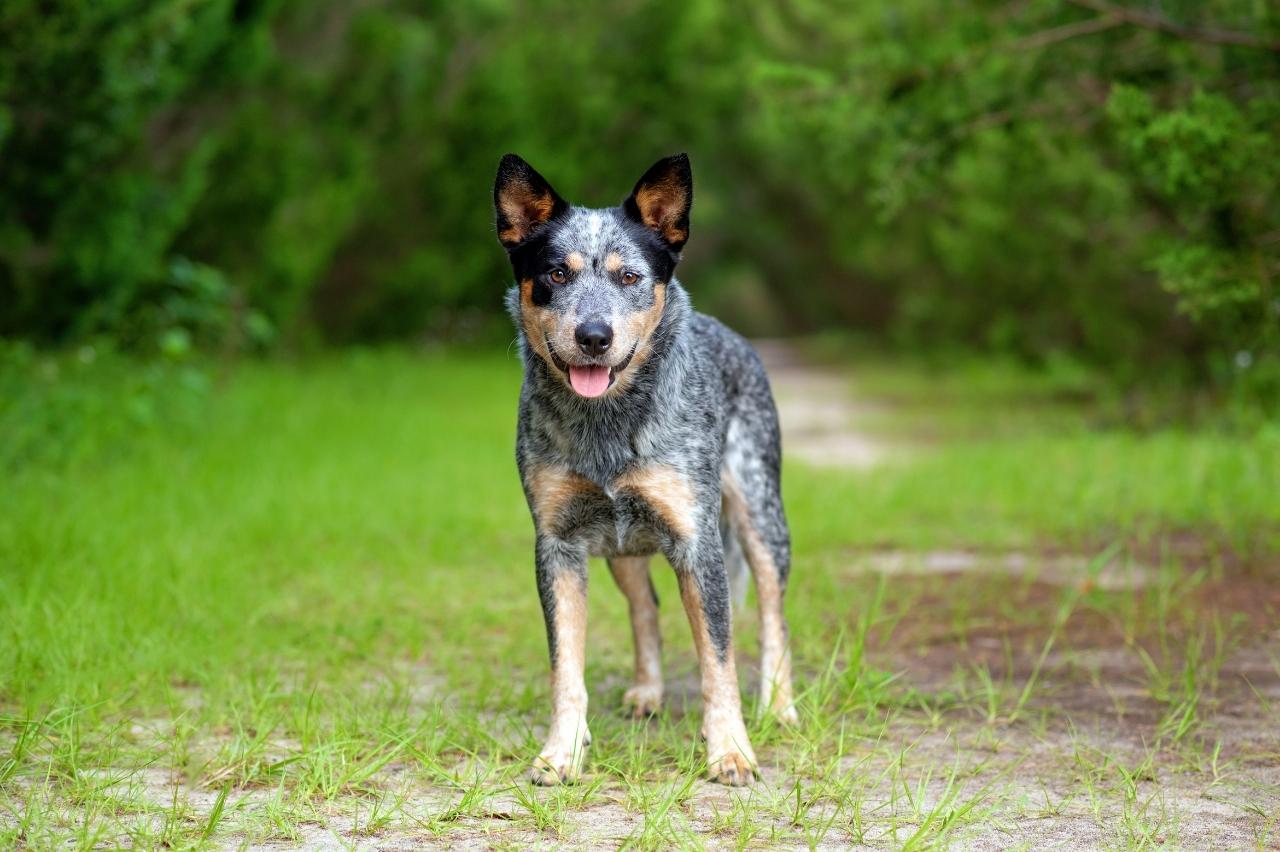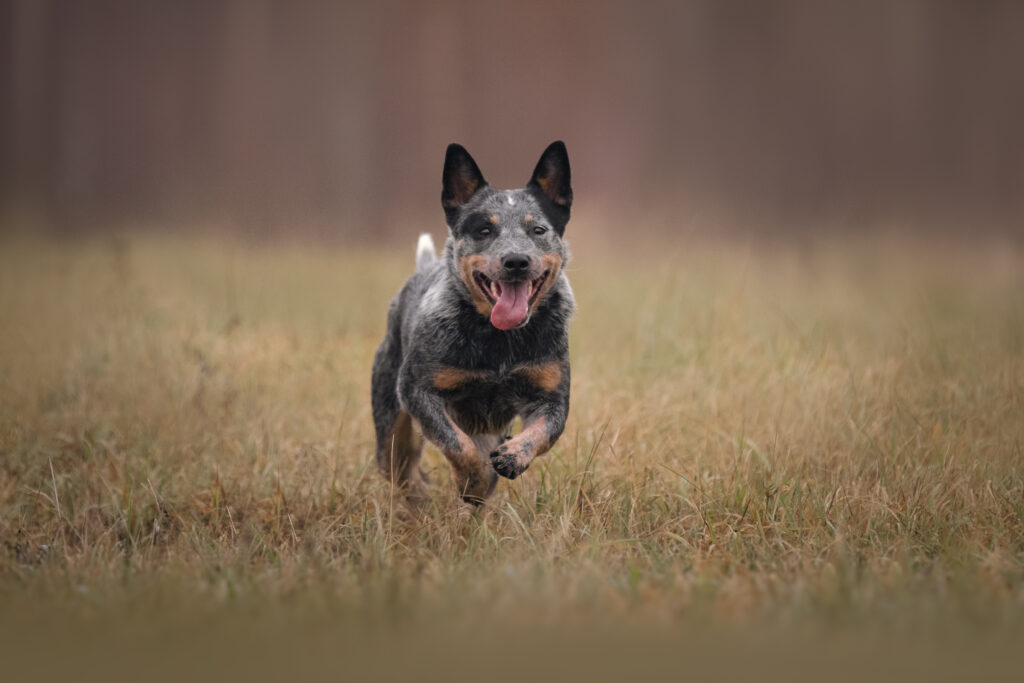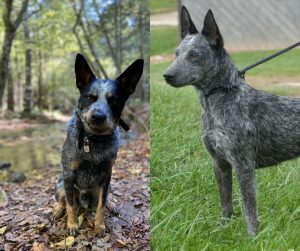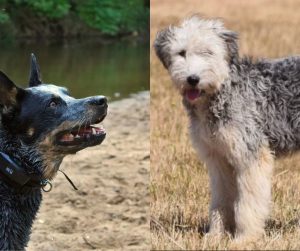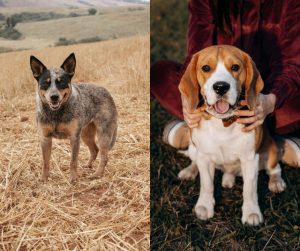So, you are considering getting an Australian Cattle Dog, otherwise known as Blue Heeler as your next pet. And for many prospective pet parents and dog owners, one of the make-or-break questions is barking. Do Blue Heelers bark a lot? We have the answers.
Blue Heelers make awesome family pets and loyal friends. They are high-energy dogs that are an amazing addition to an active household. Smart, energetic, and loyal, there is a lot to love in a Blue Heeler puppy. But what about barking? Excessive barking can be a serious behavioral problem that can irritate people around you.
Is There A Difference Between An Australian Cattle Dog And Blue Heeler?
There is absolutely no difference between an Australian Cattle Dog, Blue Heeler dog, or Red Heeler dog. They are one of the same, just with different names. The Australian Cattle Dog can come in two coat options, either Blue Merle or red merle, hence, the Red Heeler or Blue Heeler. Sometimes, they are even referred to as the Australian Heeler.
This breed originates from English cattle dogs that didn’t do well in the Australian climate, so breeders crossed them with merle highland collies and dingos to get the new Australian Cattle Dog breed.
Thomas Hall was the one who came up with the brand. He crossed blue merle smooth collies from Scotland with dingos, ending up with a canine with amazing traits for a cattle dog.
These dogs are recognized by The American Kennel Club and The Australian Cattle Dog Club.
Do They Bark A Lot?
Here is the good news. You will rarely hear an Australian Cattle bark or let his voice out. Blue Heelers do not bark for the sake of barking.
Historically, these Blue Heeler puppies were bred to be cattle herders. This included learning how to be as silent as possible while doing their job.
So, a large part of their duty involved taking care of livestock, without barking. In an environment where cattle were not fully domesticated, barking wouldn’t do any good, and loud voicing could scare off the animals.
This is why these herding dogs are as silent as possible. The answer to the question do Blue Heelers bark a lot is a definite NO.
Blue Heeler puppies have a low tendency to bark for the sake of barking. They might bark for alarm, or alert their owner, but this is not excessive barking. This dog breed barks only for a specific reason.
To prevent the barking, you have to find the trigger.
Why Do They Bark?
Now that we answered the question do Blue Heelers bark a lot, let’s talk about why and when they do bark. If an Australian Cattle dog barks, it is mostly to alert its owner of any potential danger.
These dogs are fiercely loyal and extremely protective of their owner and territory. They can sometimes overreact and be alert for danger when in reality, there is no such thing.
Remember, these dogs are always active. They are scanning their territory and looking for something that can potentially jeopardize their herd. Nowadays, since they do not herd as much, they look for something that can jeopardize their family.
With proper socialization, you can solve territorial barking and alert barking. These dogs are a bit wary of strangers. They are not as warm and accepting as a Golden Retriever or a Husky, for example.
Now, some Blue Heelers can bark more than others. That happens when you mix your Cattle dog with a breed like Chihuahua, for example. Chihuahuas are known as barkers, and their mixes inherit that trait as well.
And in some cases, Australian Cattle Dogs might bark because they are bored. Remember, these are high-energy canines that need plenty of exercise. When you do not meet their physical exercise and mental stimulation needs, they might resort to destructive behavior like barking.
What You Shouldn’t Do To Stop Your Dog From Barking?
In some rare cases, you might be dealing with Blue Heeler barking. But if that is the case, there are a couple of things you should never do.
First and foremost, if you are trying to solve a barking problem, you should not get angry at your dog. Getting angry at a barking dog will encourage the behavior and might make your canine bark even more.
Second, do not use physical punishment. It will create a worse problem. Sensitive dogs can become even more fearful or anxious when they are punished physically. That can lead to aggression.
And last, do not hold their muzzle closed with your hand. It is a wrong approach that might result in a dog bite.
What To Do With Blue Heeler’s Barking?
Now, what you can do to stop a Blue Heeler puppy from barking? There are a couple of proven methods that work.
Increase Exercise
As we said before, these dogs might bark when they are bored. It is your responsibility to provide both physical exercise and mental stimulation.
Try to ramp it up. Blue Heelers need between 60 and 90 minutes of exercise per day.
Encourage Calmness
One of the big mistakes owners make is they ignore good behavior, and try to punish only bad ones. When your dog is calm, encourage that calmness by rewarding it with treats. You should also work on a calm sit stat or down-stay positions.
Go out with your dog, and have him sit and observe the environment. Do nothing. This teaches your dog to be calm in an urban setting. Just begin from a low-distractions area, and move to a more challenging environment.
Desensitization
Desensitization is a process in which you expose your dog to the stimulus over and over again until your dog doesn’t react to it.
Find the threshold your dog is comfortable, and then slowly move closer to the trigger. But to do this, you have to find the trigger for barking first.
For example, some dogs bark at the vacuum cleaner. Over time, with desensitization, you can reduce the barking.
Teach The Command Shush
Another way to prevent your dog from barking is teaching the command Shush or Quiet. To do this, you can use the basic learning sequence, and lure your dog into barking on cue first. Once your dog can bark at command, you can teach them to be quiet.
How do you do that? By bringing a treat close to your dog’s nose while barking. Dogs cannot sniff and bark at the same time. And in 99% of cases, they will choose to sniff the tasty treat before barking. Reward the quiet behavior. Positive reinforcement is always an option for teaching any behavior.


